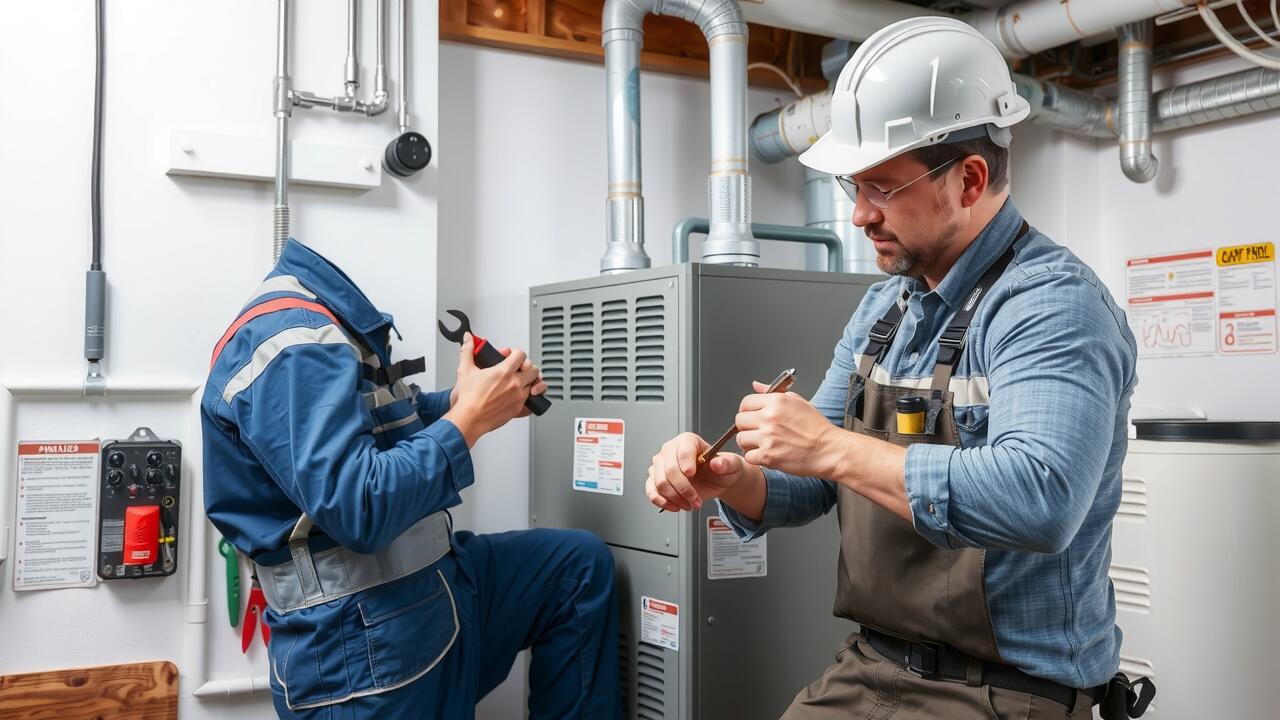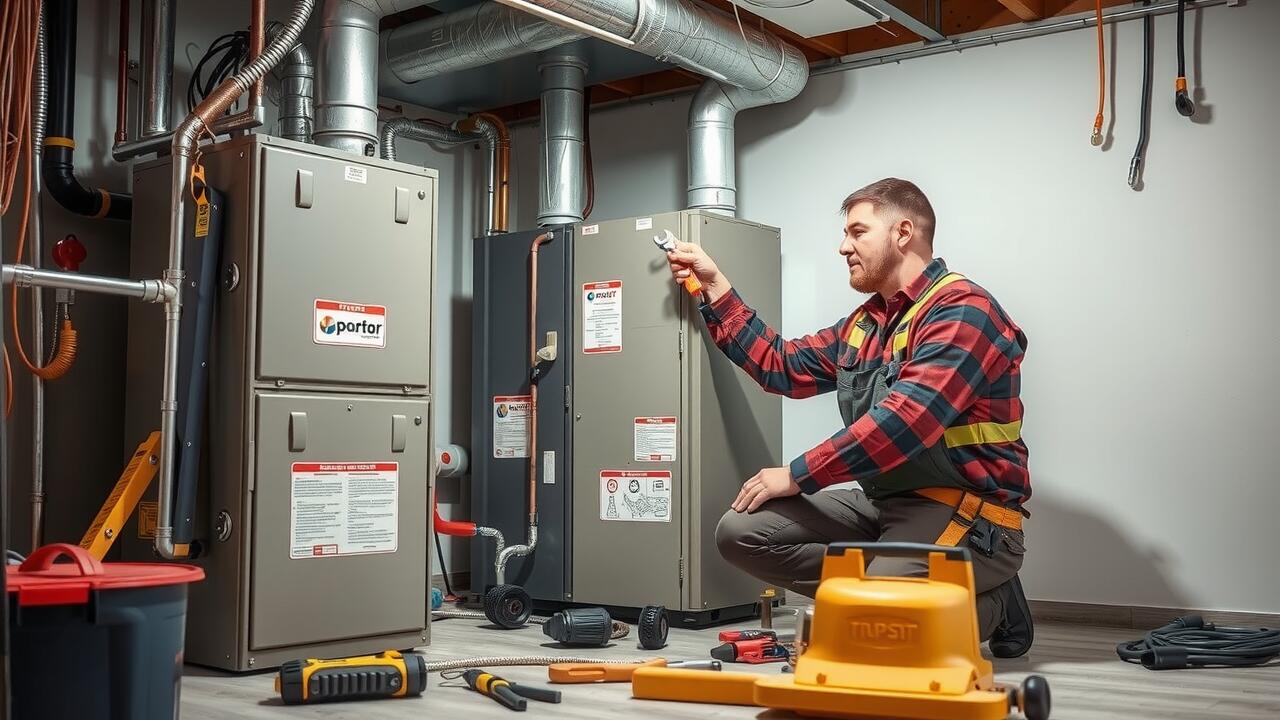
Costs Associated with Furnace Repairs
Repairing a furnace can vary significantly in cost depending on the specific issues and the type of furnace. Basic repairs, such as fixing a faulty thermostat or replacing a clogged filter, may only set you back a small amount. More complex problems, such as a failing heat exchanger or motor, can lead to much higher expenses. It's essential to get estimates from multiple service providers to ensure you're getting a fair price for Furnace Installation and Repair.
In addition to repair costs, homeowners should also consider potential service calls and diagnostic fees. Many companies charge a fee just to assess the problem, which can add to the total expense. If a repair is needed, this fee may be waived, but it's important to clarify this with the service provider. Understanding all associated costs upfront can help avoid surprises during the repair process and guide any decisions regarding maintenance or replacement.
Factors Influencing Repair Expenses
Several factors can significantly influence the expenses associated with furnace repairs. The type of furnace plays a crucial role; high-efficiency models may have more expensive parts, while older units could require different maintenance approaches. The specific symptoms of the malfunction also matter. For instance, a simple thermostat issue will generally cost less to remedy than a major mechanical failure. Additionally, the time of year can impact prices, with demand often spiking during colder months when many homeowners seek emergency assistance.
Location also contributes to repair costs, as service rates vary by region. Urban areas may face higher hourly rates due to increased living costs and demand, while rural areas might offer more competitive pricing. The qualifications and experience of the technician are essential considerations as well. A certified professional with extensive experience in furnace installation and repair may charge a premium for their expertise, but their skills can help ensure that repairs are conducted safely and effectively.
Warranty and Service Agreements
Warranties and service agreements play a significant role in managing furnace maintenance costs. These documents typically cover specific parts and labor for a predetermined duration, providing peace of mind for homeowners. Understanding what is included in your warranty can help you save on unforeseen repair expenses down the line. For instance, some warranties may cover costs associated with furnace installation and repair, depending on the manufacturer and model.
Service agreements often provide regular maintenance checks and priority service during peak seasons. This proactive approach can lead to longer equipment life and improved efficiency, which ultimately reduces heating costs. Homeowners should read the fine print to grasp the limitations and any required conditions, ensuring they make informed decisions about their furnace care.
Understanding Your Coverage Options
When navigating furnace issues, it is essential to understand the coverage options offered by manufacturers and service providers. Often, warranties come with the purchase of a new furnace, covering specific parts and sometimes labor for a designated period. For those who require ongoing protection, extended warranties or service agreements might be available, offering peace of mind for future repairs. Checking the fine print can help clarify what is covered under these agreements, especially regarding Furnace Installation and Repair.
Homeowners should also investigate any existing coverage through homeowners' insurance policies. Some policies may include provisions for heating system malfunctions, which can significantly impact repair costs. It is advisable to contact your insurance agent to understand the terms and requirements related to coverage. Knowing what options are available allows homeowners to make informed decisions when faced with unexpected furnace problems, ensuring they receive the best possible support and service.
DIY Repairs vs. Professional Help
Tackling furnace issues on your own can be tempting, especially with the wealth of online resources available. Basic problems like replacing a filter or checking the thermostat often fall within the skill set of a handy homeowner. However, more complex issues—including those requiring electrical work or gas line adjustments—can pose significant risks. Understanding your limits and the necessary tools for effective furnace installation and repair is essential.
On the other hand, hiring a professional can save time and ensure safety. Certified technicians bring expertise and training to the table, quickly diagnosing and fixing problems that may be beyond a novice’s capability. They also have access to specialized tools and replacement parts, which can expedite the repair process. While this option incurs a higher cost, the peace of mind that comes with professional assistance often outweighs the potential dangers of DIY approaches.
Assessing Your Skills and Risks
Before embarking on any DIY repairs, it's essential to evaluate your skills and knowledge related to furnace systems. Familiarity with basic mechanical principles and an understanding of how furnaces operate can significantly influence your ability to diagnose and resolve issues. Additionally, consider the complexity of the problem at hand. Some repairs may appear straightforward but can involve intricate components requiring specialized tools and expertise. Furnace installation and repair often demand a higher level of technical know-how, making them less suitable for those without sufficient experience.
The risks associated with attempting repairs yourself should not be underestimated. Mishandling furnace components can result in further damage, increased costs, or even safety hazards. Gas leaks, electrical issues, and other potential dangers necessitate a cautious approach. If you find yourself uncertain about any aspect of the repair process, it is wise to contact a professional. They bring the necessary expertise and tools, ensuring that repairs are completed safely and effectively. Balancing your skills against the risks involved will help determine the best course of action for maintaining your furnace.
FAQS
Who should I call if my furnace stops working?
You should contact a licensed HVAC technician or a professional heating repair service to diagnose and fix the issue with your furnace.
How much does it typically cost to repair a furnace?
The cost of furnace repairs can vary widely depending on the issue, but it usually ranges from $100 to $1,000 or more, depending on the parts that need to be replaced and labor costs.
What factors can influence the cost of furnace repairs?
Factors that can influence repair costs include the type of furnace, the specific problem, the parts needed, labor charges, and whether the furnace is under warranty or service agreements.
What should I know about my furnace warranty?
It's important to read your furnace warranty carefully to understand what is covered, the duration of coverage, and whether you need to use specific service providers to maintain your warranty.
Can I attempt to repair my furnace on my own?
While some minor issues may be manageable for DIY repairs, it's generally recommended to call a professional, especially for complex problems, to ensure safety and avoid further damage to the unit.

